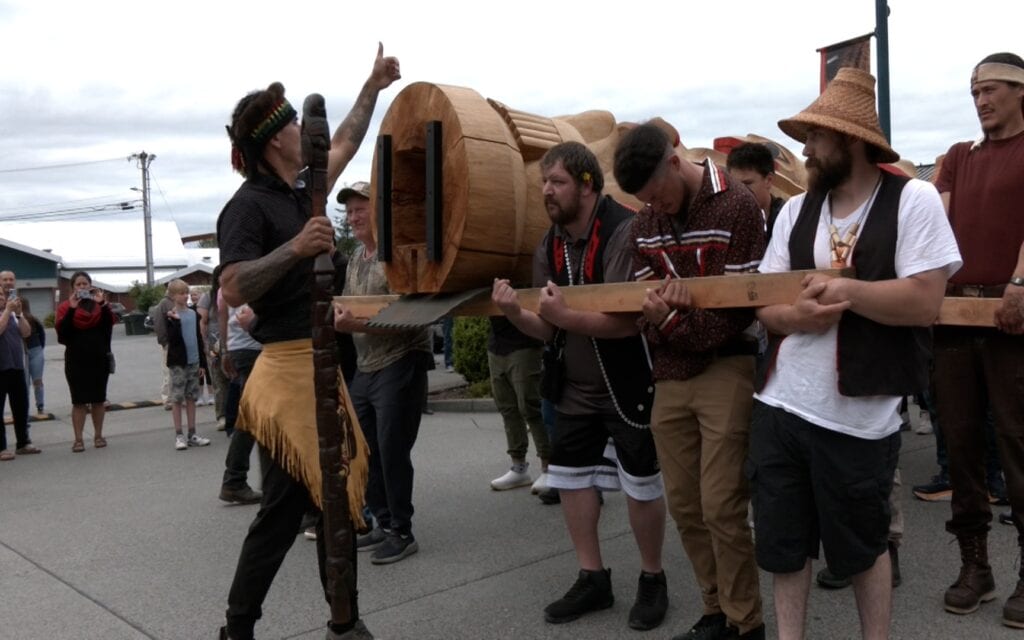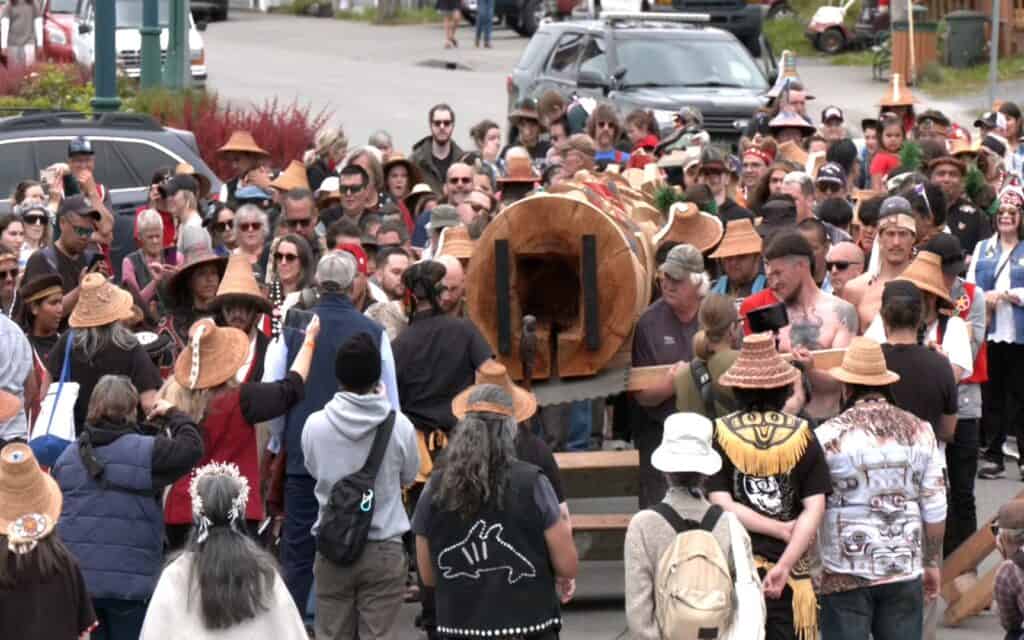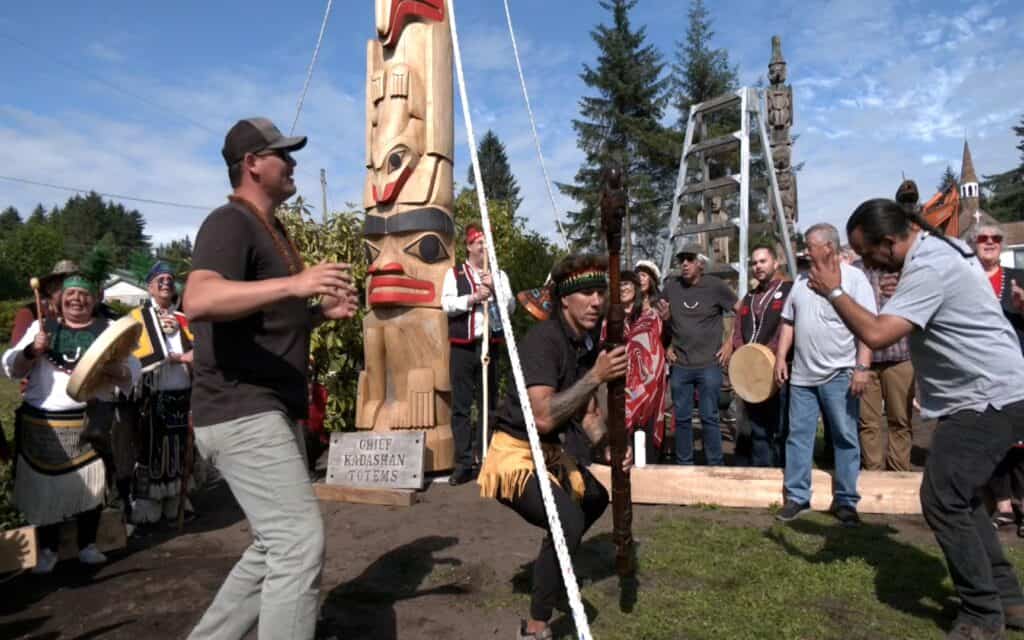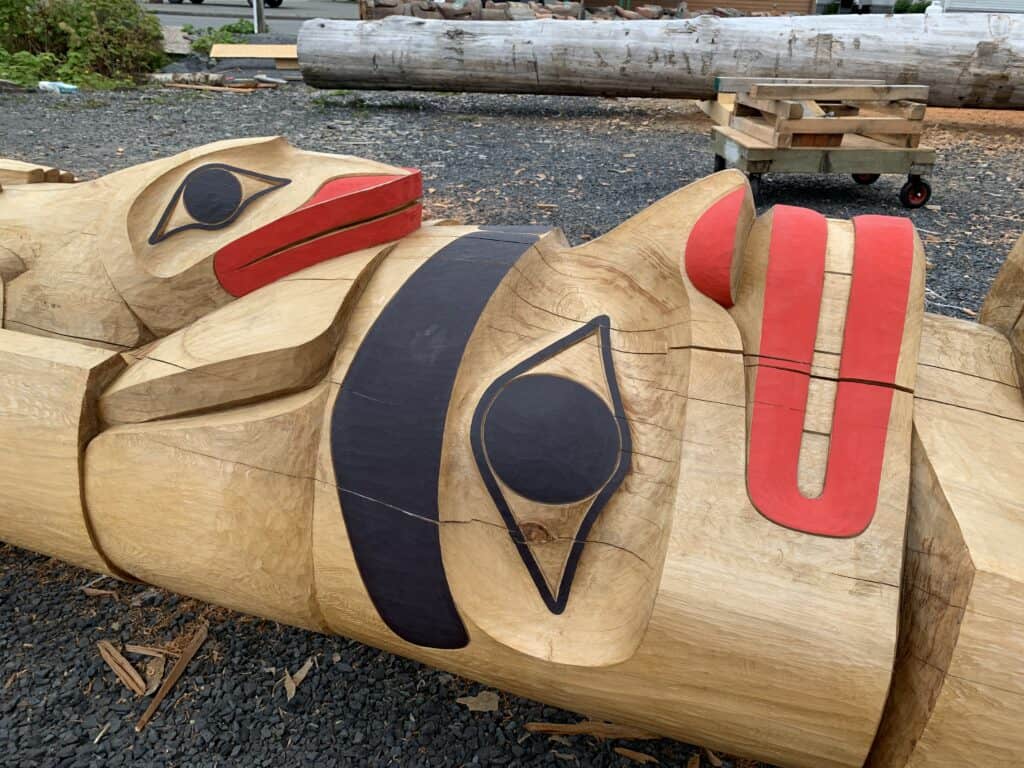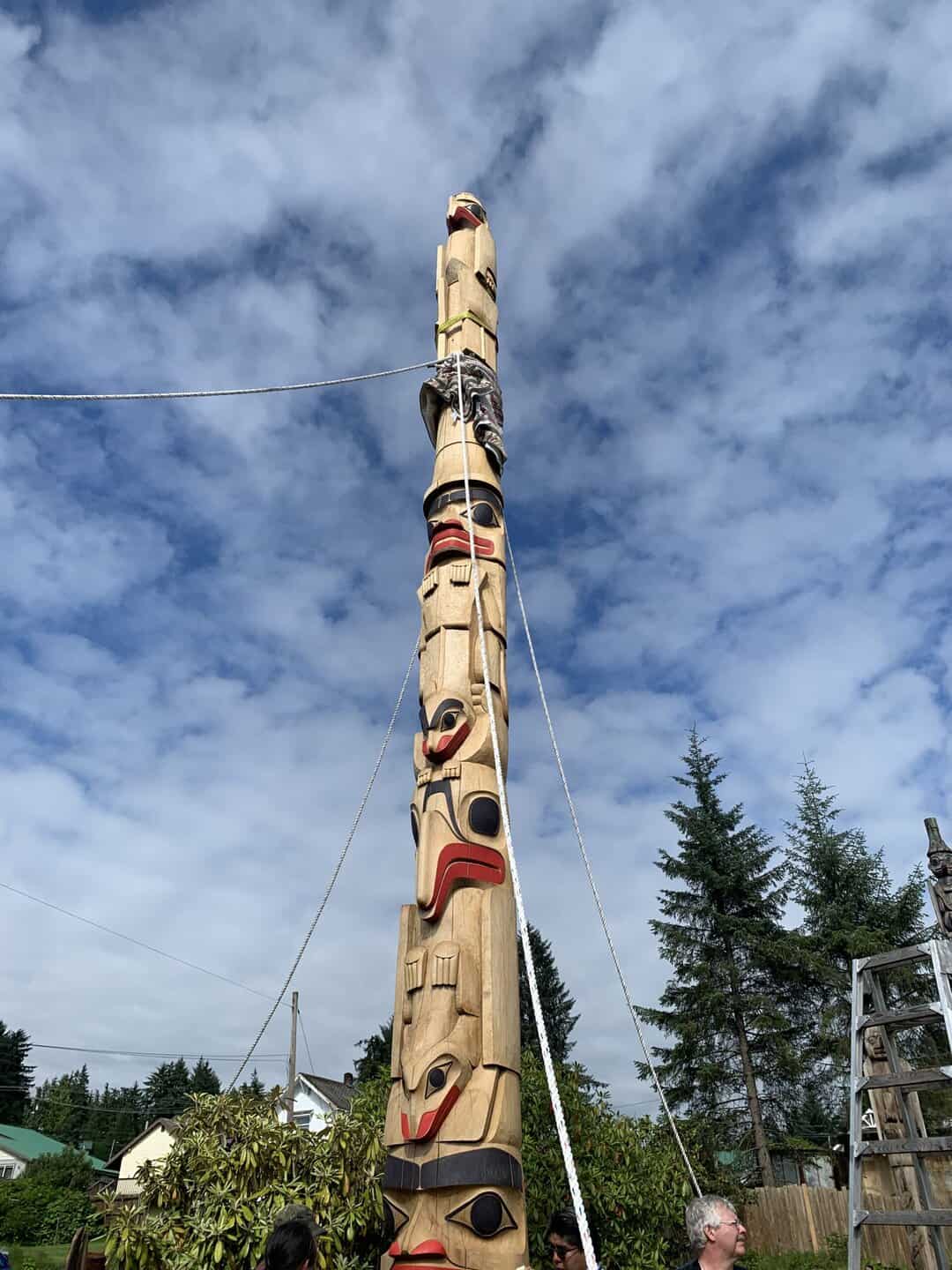Men and women gripped their forearms around two-by-four planks and worked in unison to hoist a 37-foot totem pole off the ground. The effort to lift the nearly 4,000 pound pole was visible on their faces as people in the crowd cheered in support.
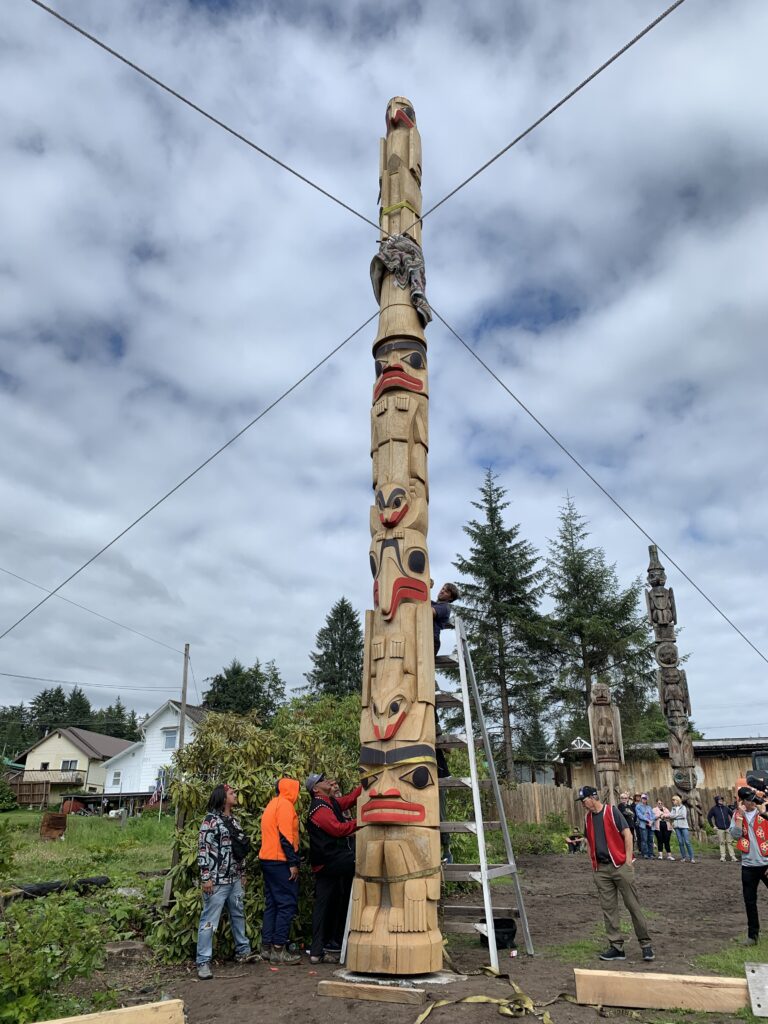
It takes a community to move a totem pole and the Eagles, Ravens, Wolves and their families showed up in Wrangell to make that happen. This was the town’s first totem pole raising in nearly four decades.
Scores of people pitched in to carry the Kadashan Pole from the Wrangell Cooperative Association carving shed through the streets to the Totem Park a few blocks away. A group of Raven clan members followed, drumming and singing in celebration.
Kadashan Pole Lead Carver TJ Young explained he and the team carved the totem figures almost the entire way around, so it wasn’t hollow on the backside like more traditional poles. The weight proved to be a challenge as they began to hoist the totem.
“We actually needed a lot more people than I thought. We started plucking people out of the crowd,” TJ said. “It’s special when everyone can pitch in and help out and that’s how we get big things done, through unity.”
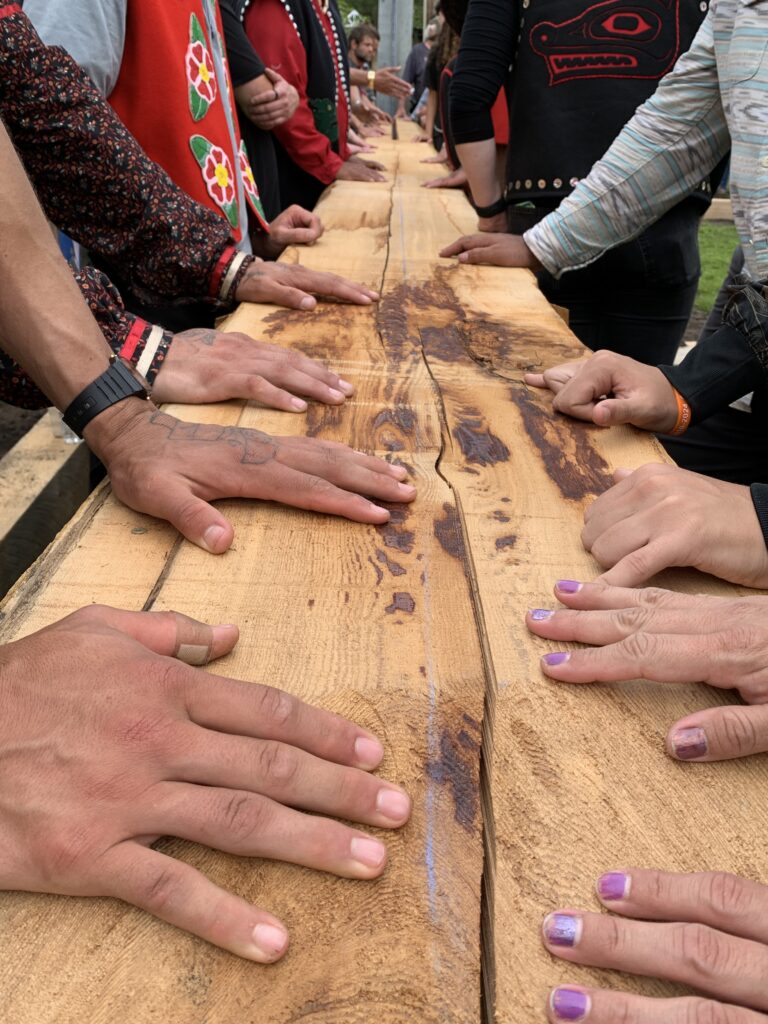
TJ was one of three lead carvers who worked on the Wrangell Cooperative Association’s project to train local apprentices to learn the art of creating a totem pole from start to finish. He and his brother Joe Young, along with Tommy Joseph, mentored Mike Hoyt, Tony Harding, Linda Churchill and Susie Beebe.
“That’s been our goal over the past couple of years is to share our knowledge. When I finished my apprenticeship with Robert Davidson that’s one thing he said is, ‘Don’t be stingy,’” TJ said.
Together, the carvers worked on the Kadashan Pole, three poles for Shakes Island and a grave marker placed on the lawn of the U.S. Post Office.
“Shakes Island has always felt like the heart of Wrangell,” said apprentice Mike Hoyt. “I remember dancing there when I was four years old, I remember totem poles being there and I’m really happy the younger generation is going to see that again. In talking with Elders, they talk about how wonderful it is to see those poles up again.”
On the front side of the clan house now sits the Gunakaadeit Pole and the Bear Up the Mountain Pole. The Underwater Sea Bear Pole stands at the back of the house, facing the water.
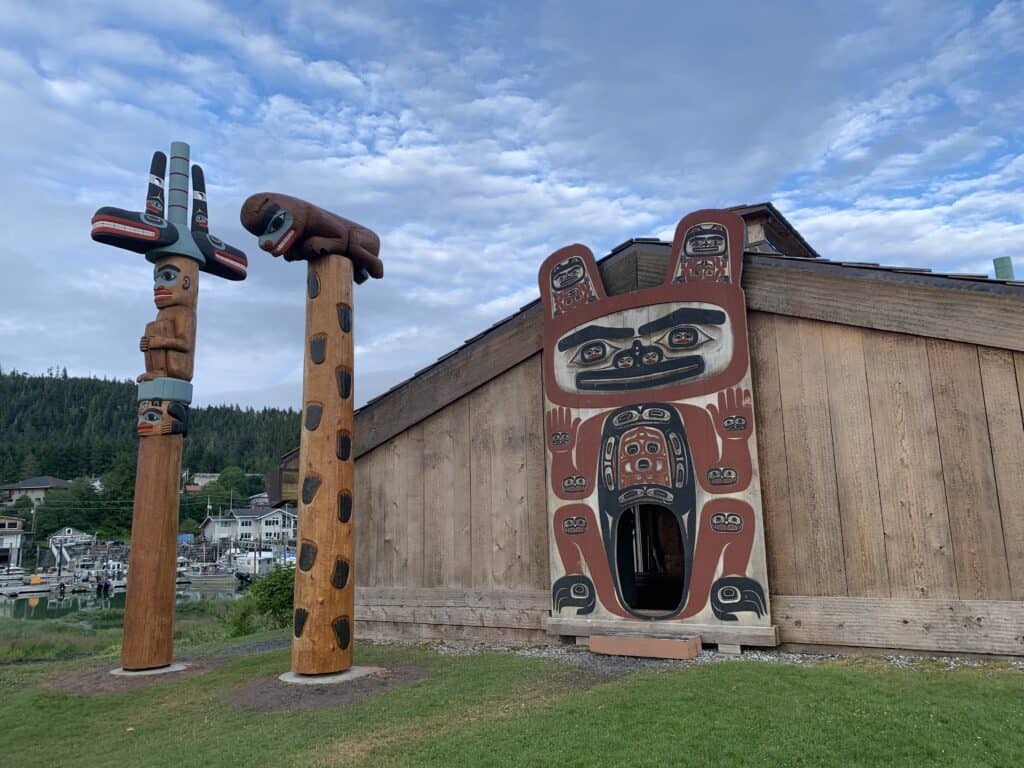
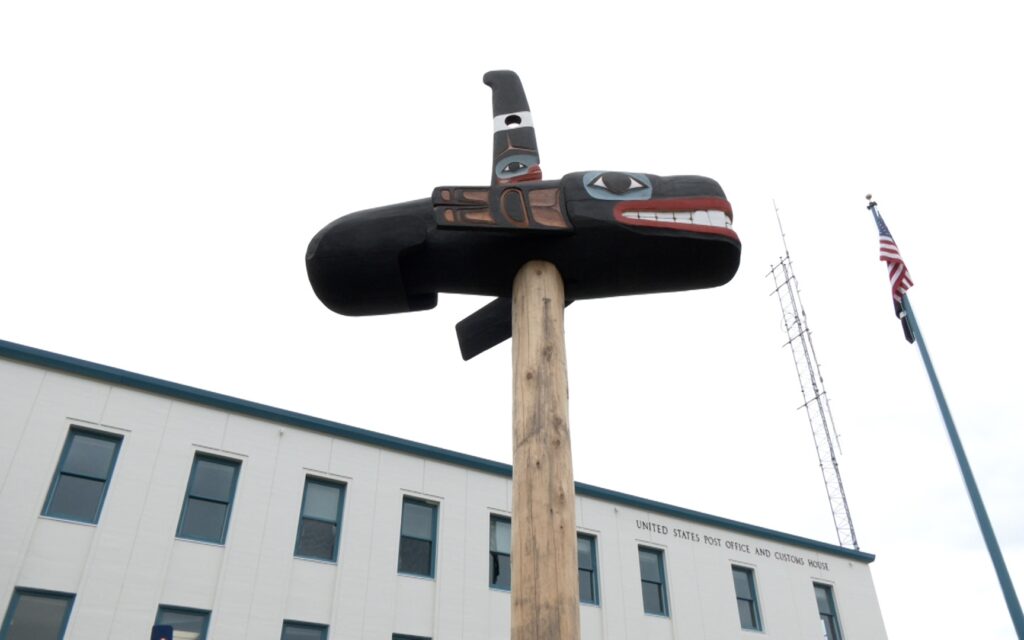
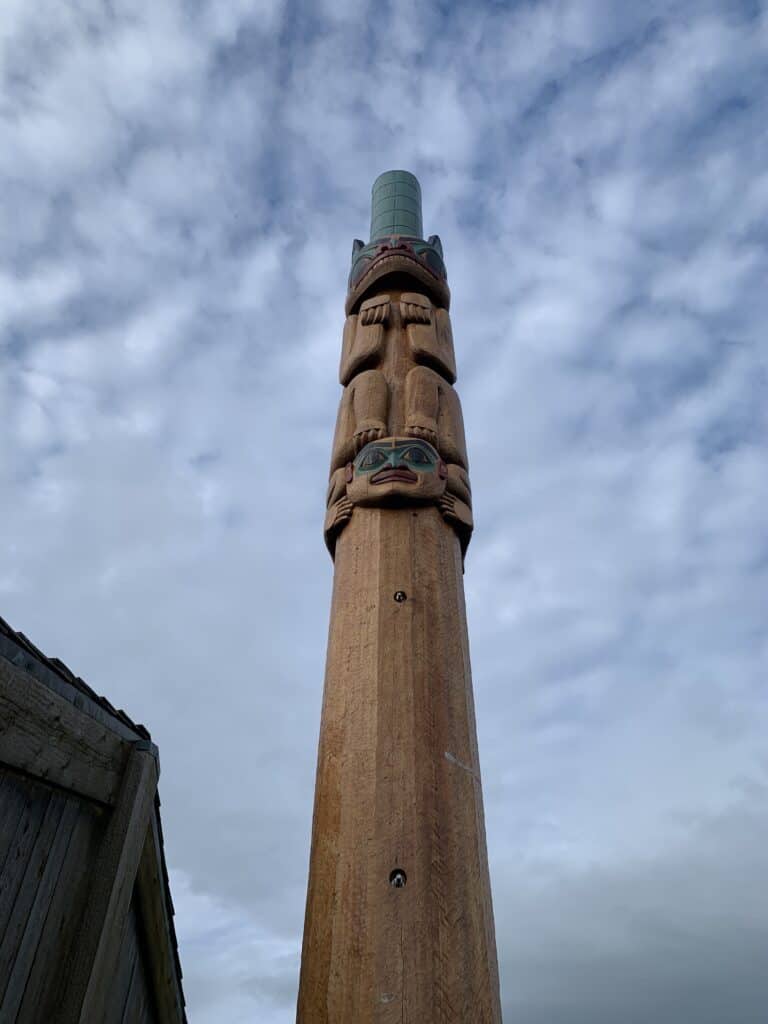
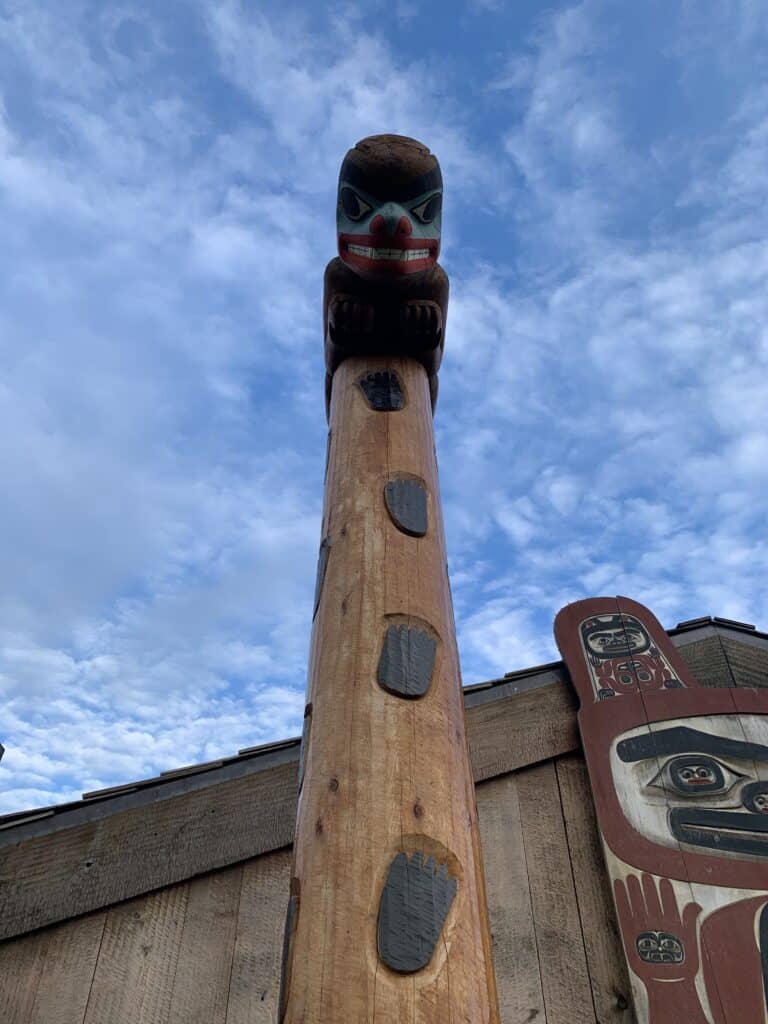
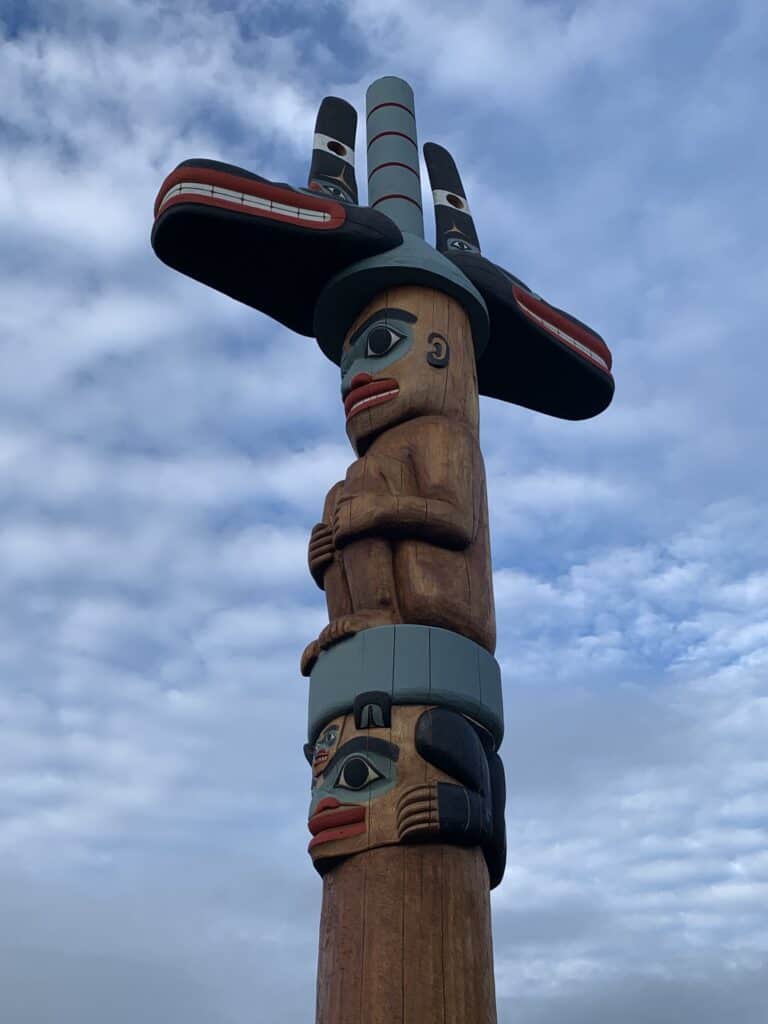
In the late 1890s, Wrangell was home to dozens of totem poles that have since decayed with the passage of time. Mike comes from a family of carvers, going back generations to his great-great-great-grandfather. He asked to take the lead on the Killer Whale Grave Marker, a Kayaashkeiditaan tribute to Shx’atoo, who died during the U.S. Army’s 1869 bombardment of the Native village at Wrangell.
“I think that was, on a personal level, one of the more significant moments of the weekend where seeing it actually get place and knowing it was going to stand and everything was falling into place as it was supposed to and knowing it was in the same lawn where my great-great-grandfather’s totem was, all of those things felt really significant,” he said.
Mike said new totems show Wrangell is embracing its Indigenous roots.
“My Auntie Marge once described Wrangell as a sleeping giant and we’re starting to wake up. Culturally for a long time, other communities looked at Wrangell as a non-Native community in a way,” he said. “I think it’s important for people to see reminders of the culture, of the land, of the history of the land and totem poles are a great representation of that.”
The master carver–apprentice program doesn’t just teach carving—it nurtures identity, resilience, and leadership. It’s an investment in cultural continuity and community strength for generations to come.
